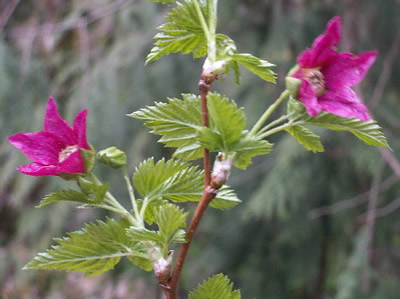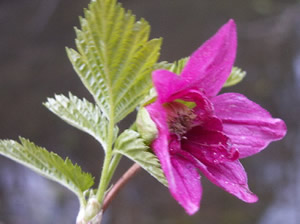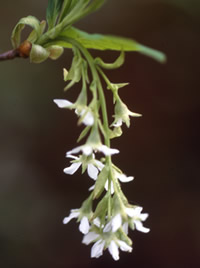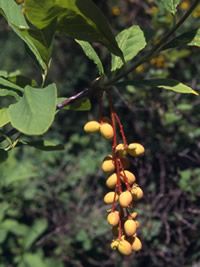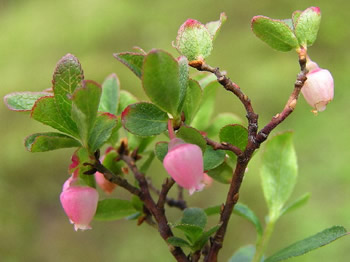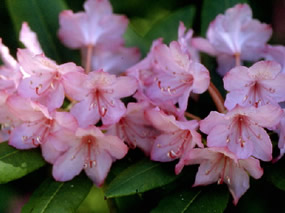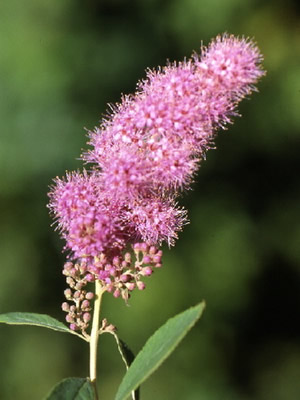
Another wander through the woods and hedgerows to look at the various shrubs that make these walks into nature just that little bit more interesting. To see the flowers and the fruits that are as varied as the shrubs themselves. They range from a few inches high in alpine areas, to over ten feet tall and ten feet wide.
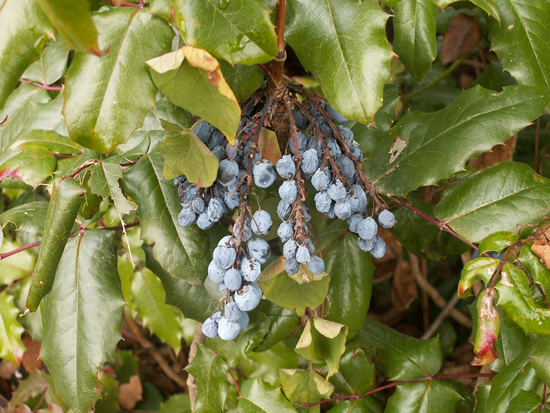
There are two popular varieties of Oregon Grape, Tall Oregon Grape, Berberis Aquifolium, and Dwarf Oregon Grape, Berberis nervosa. They are Berberis sp.in botanists language and Mahonia Aquifolium and Mahonia nervosa in the horticulturists world. Oregon Grape is a well known herbal medicine, first made available in 1886 for skin problems. That drug company is still operating today.
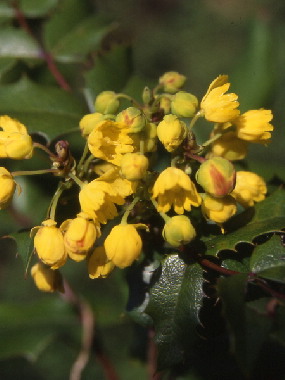 |
 |
The flowers and the fruit of the two species are very much the same.
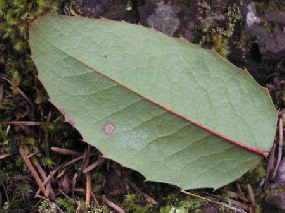 |
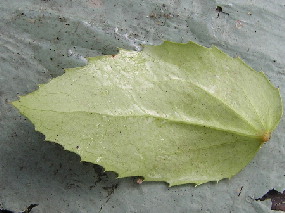 |
The plants themselves can be identified by looking at the underside of the leaves.The fish bone type of leaf on the left is the Tall Oregon Grape with the pattern of the dwarf plant on the right.
 |
 |
Black Twinberry, Lonicera involucrata,of course gets its common name from the black berries that form after the yellow flowers. The Twin part could include the sets of two flowers that produce two berries each.
 |
 |
Black Twinberry, Lonicera involucrata, it is certainly a very nice shrub, right through the flowering season to the formation of the fruits.
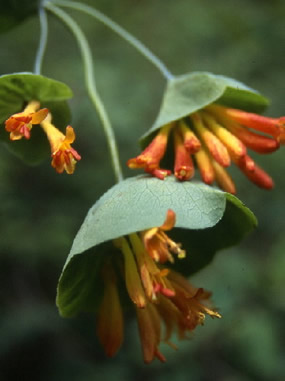 |
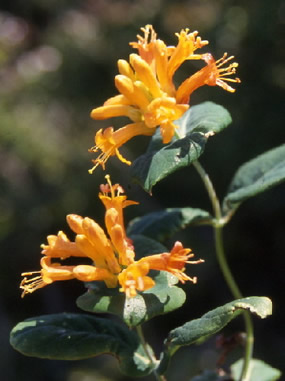 |
Orange Honeysuckle,
Lonicera ciliosa, is a sprawling, trailing shrub, that will use other plants in the area to climb on to and over and use them as supports. The tube like flowers are very attractive to hummingbirds.

Ninebark with the Latin name of Physocarpus opulifolius, is noted for its bark. It peels to show several layers of various shades and it is this phenomenal that brought about its common name. During the growing season however the bark is usually difficult to see, the fall and winter season is the best time. The small whitish flowers are in dense rounded clusters resembling spirea flowers.

Alpine spirea, Spireae densiflora, is a typical example. A sub alpine species that rarely grows over 3 feet high and has clusters of small reddish flowers on the end of the stems.
 |
 |
|
Another shrub more easily recognized by the fruits than the flower is Snowberry, Symphoricarpus albus. The flowers are rather inconspicuous compared to the bunches of white berries. |



